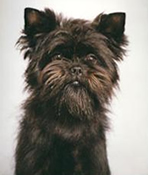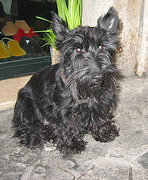Sounds Of The Season And Your Dog's Fear
Thunder claps and your dog immediately bolts to a dark corner or under the bed. Even if you have a so-called mean breed, he may turn into a scared little puppy whenever there is thunder.
Fear of thunder and other loud noises is actually common in pets. Fear, which is a natural reaction to a threatening situation, is designed to guard the animal from harm, while a phobia is a persistent, irrational, and extreme fear response. Both fears and phobias can develop in any breed regardless of age.
Generally, fears can either develop after a single frightening incident or gradually over time. They are reinforced if the stimulus is frequently present. Canines that are scared of loud noises often do not learn to tolerate those sounds. In fact, they usually become more fearful with each exposure, and the fear may grow to include other similar sounds. For example, a dog that was initially only afraid of thunder may eventually become scared of sonic booms, cars backfiring, or fireworks as well.
A fearful pet may seek human company, pace, freeze, tremble, pant, salivate, hide, bark at the noise, or attempt to escape. In severe cases, a dog may even injure himself trying to get away.
Diagnosis
It's important to bring your pet to a veterinarian for a complete physical examination as it will rule out any medical conditions that may aggravate his fear as well as verify his health. You may also want to consult with a veterinary behaviorist.
Most of the time, diagnosis of noise or thunder phobia is obvious. However, if the noise happens when you are away, you may come home to discover destruction, inappropriate elimination, or your dog on the loose. In such cases, audio or video recordings can help you determine exactly what triggers the unwanted behavior.
Treatment
Treatment may be as simple as providing a safe hiding place for your dog, bringing him indoors, or turning on the radio, television, or fan for some white noise.
If your pet's symptoms are more severe, a counter-conditioning and desensitization program may be useful. This involves replicating the fear-inducing noise via a recording and then exposing your dog to it at a low volume when he is relaxed. You can then increase the volume slowly, taking care not to scare him. A vet or behaviorist can help you design a suitable program.
Desensitization to thunder is tricky because other factors that are difficult to recreate are also present in an actual storm, such as darkening skies, changes in barometric pressure, and even certain odors. A real storm will usually precipitate the phobic reaction even after desensitization.
Your vet or behaviorist may also recommend medication to combat anxiety.
Home Care
If your dog's fear is moderate and the noise does not occur frequently, simple methods may be sufficient. Try to anticipate your dog's exposure to the noise and avoid them if possible. Talk to your pet in a light, happy tone that tells him the storm is not a big deal. Encourage him to find a quiet place to rest and wait out the storm.
Don't try to reassure your dog with soothing words, petting, or extra attention as these can reinforce his fears and make the problem worse. Also keep in mind that canines are sensitive to people's moods so he can be influenced by how you react to the noise. It is best to act cheerful and upbeat or to redirect your dog's attention to another activity in order to distract him.

 Washable Dog Bed for Large Dogs
As I walked down the aisles
Washable Dog Bed for Large Dogs
As I walked down the aisles
 Pet Hammock for Car
We have an old dog called Sa
Pet Hammock for Car
We have an old dog called Sa
 Tips For Renting With Pets: Finding a place to live with your dog
Tips For Renting With Pets
I have been owned by dogs for ov
Tips For Renting With Pets: Finding a place to live with your dog
Tips For Renting With Pets
I have been owned by dogs for ov
 How To End The Fear Of Fireworks For Your Dog
Dogs And FireworksHaving bee
How To End The Fear Of Fireworks For Your Dog
Dogs And FireworksHaving bee
 Scottish Terrier Breeder Interview: Cindy Cooke Tells Us About Scotties
Scottish Terrier Breeder Interview
Cindy Cooke has been wor
Scottish Terrier Breeder Interview: Cindy Cooke Tells Us About Scotties
Scottish Terrier Breeder Interview
Cindy Cooke has been wor